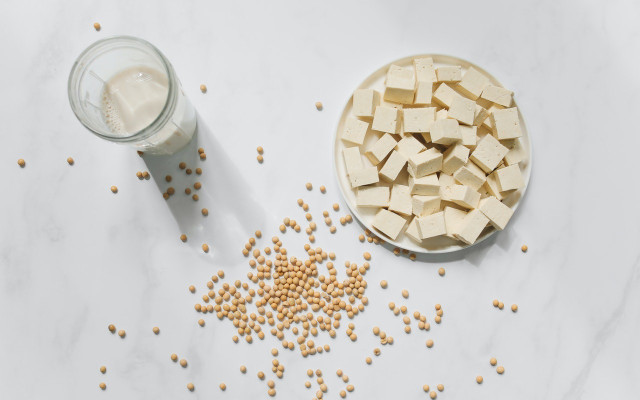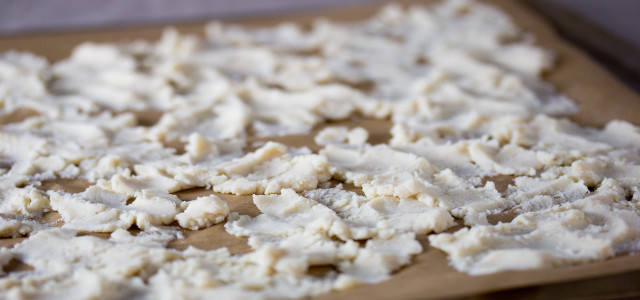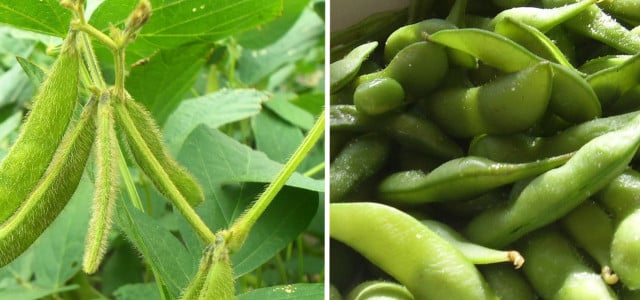Our tasty okara recipe will convince you that this soy pulp shouldn’t go to waste ever again: the by-product of soy production is hardly ever used — despite being rich in nutrients and super versatile.
Okara is a by-product of the production of soy milk or tofu. More specifically, it is soy pulp — the solid components of the soybean that are filtered out of the milk. It is often considered a waste product and is consequently treated as such in production. Any pulp saved is often used in animal feed as a fattener, especially for pigs.
Soy pulp doesn’t have a strong flavor profile, which makes it an ideal base for well-seasoned dishes. It is also very high in fiber and protein. We’ll talk about the benefits of okara, and share our favorite okara recipe so you can start taking advantage of this nutritious by-product right away.
Nutritional Profile of Okara

Soy products are usually very rich in protein and provide a comparatively high amount of fiber. This is also true for okara, although the soy pulp contains only parts of the whole soybean.
According to the Japan Tofu Association, okara contains plenty of dietary fiber, B vitamins, folic acid, high amounts of both calcium and potassium, along with various other minerals. It’s also a good vegetarian source of iron. Despite all the nutritional benefits, okara that is produced as a by-product of soy production is not often used for human consumption.
Because okara isn’t widely used in Western cuisine, finding it in the supermarket might be a bit challenging. But luckily, all you need to do is save the leftover solids the next time you make soy milk, and voilà, you have okara.
How do you make your own soymilk? Easy:
To make your own soy milk, soak dried soybeans in water overnight, then purée them and strain the mixture through a cloth or sieve. Okara is the leftover solids that remain in the cloth or sieve, the soybean pulp. Save it and use it to make homemade tempeh or for different okara recipes, like these fritters below.
Okara Fritters Recipe
Ingredients
- 1 small onion
- 1 clove of garlic
- 6.5 oz. okara
- 1¼ cups breadcrumbs
- 1 egg (or vegan egg substitute)
- 2 tsp flour
- 1 tsp vegetable stock powder
- salt and pepper
- oil for frying
Instructions
- Peel and finely dice both the onion and garlic.
- Put the onion, garlic, okara, breadcrumbs, flour, and stock powder in a bowl.
- Add the egg or vegan egg substitute (one tablespoon of soy flour with three to four tablespoons of water) and mix until well combined.
- Knead into a smooth mass. If the mixture is still too sticky, add a little more flour or breadcrumbs. If it is too dry, thin it with a little water.
- Form small balls and flatten them to create patties. Depending on the size, you should get about 8-12 fritters.
- Heat oil in a frying pan and fry the okara patties for two to three minutes on each side until golden brown.
This article has been translated from German by Karen Stankiewicz. You can find the original here: Okara: Das steckt hinter der Sojapulpe
Important Information regarding Health-related Topics.
** Links to retailers marked with ** or underlined orange are partially partner links: If you buy here, you actively support Utopia.org, because we will receive a small part of the sales proceeds. More info.Do you like this post?







